The Ultimate Guide to Newborn Wearing: Benefits, Safety, and Tips for New Parents
Newborn wearing, the simple act of carrying your baby close in a sling or carrier, is something parents have been doing for centuries. Cultures all over the world have practiced babywearing, from African wraps to Asian slings.
Today, newborn wearing is gaining popularity among new parents for its convenience and numerous benefits. It helps soothe your newborn, keeps them close for bonding, and leaves your hands free to get things done (or at least try to!)
In this guide, we’ll explore the key benefits, safety tips, and practical advice to help you make the most of newborn wearing with your little one.
4 Main Benefits of Newborn Wearing
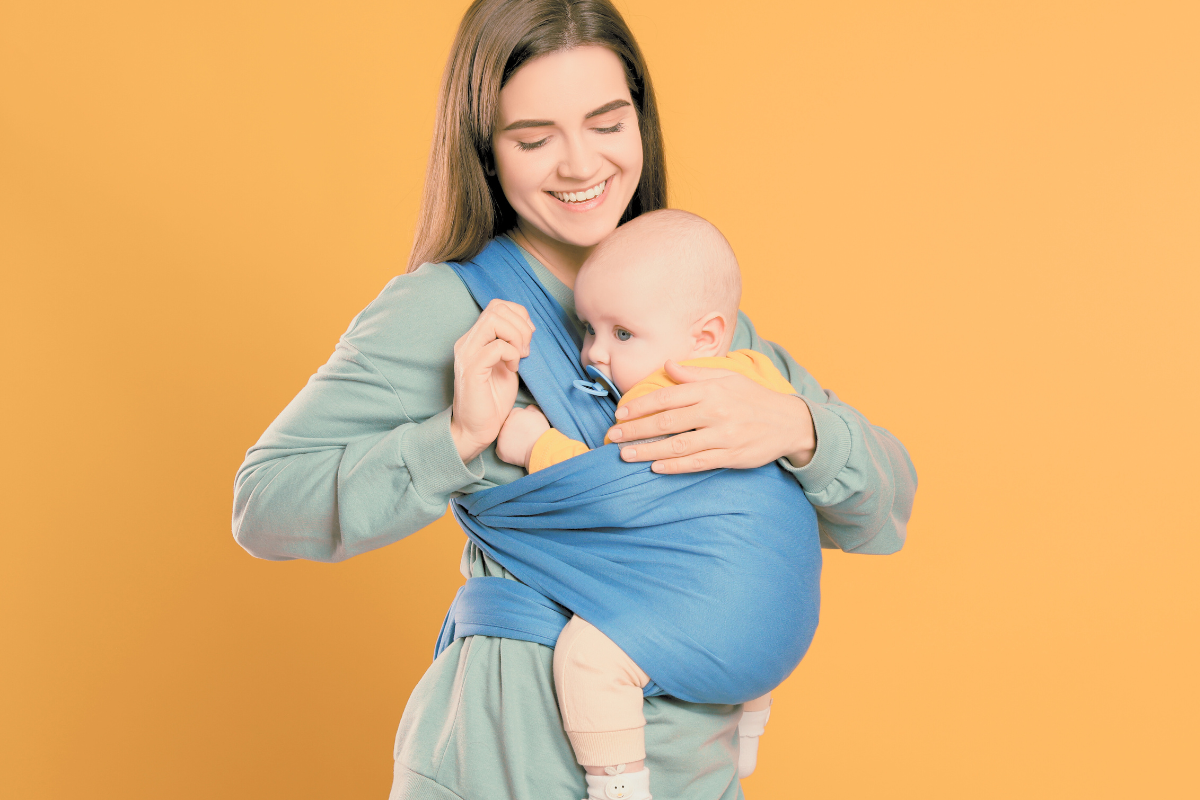
Newborn wearing isn’t just close physical contact with your baby—it brings a lot of other benefits for both of you. It can soothe an infant crying, make breastfeeding simpler, and even support your baby’s growth in surprising ways. Let’s explore why newborn wearing can be your secret weapon in parenting:
-
Reduces crying and fussing. Wearing your baby can work wonders to calm them when nothing else does. Research shows that carrying your baby for around three hours a day can reduce crying by 43% during the day and 51% in the evening.
-
Promotes bonding and attachment. Holding your baby close helps deepen that early parent-child connection, according to studies. It’s a great way to help your newborn child feel safe and secure while bonding emotionally.
-
Supports breastfeeding. Newborn wearing can make breastfeeding on the go much easier, giving you a way to respond to hunger cues quickly. Moms who babywear tend to breastfeed longer and more frequently, which promotes several benefits to their child.
-
Promotes healthy development. Skin-to-skin contact helps with newborn development in key areas like breathing, heart rate, and weight gain. The more you wear your baby, the more you support their healthy growth towards other infant milestones like tummy time, rolling over, and crawling.
Is Newborn Wearing Safe?
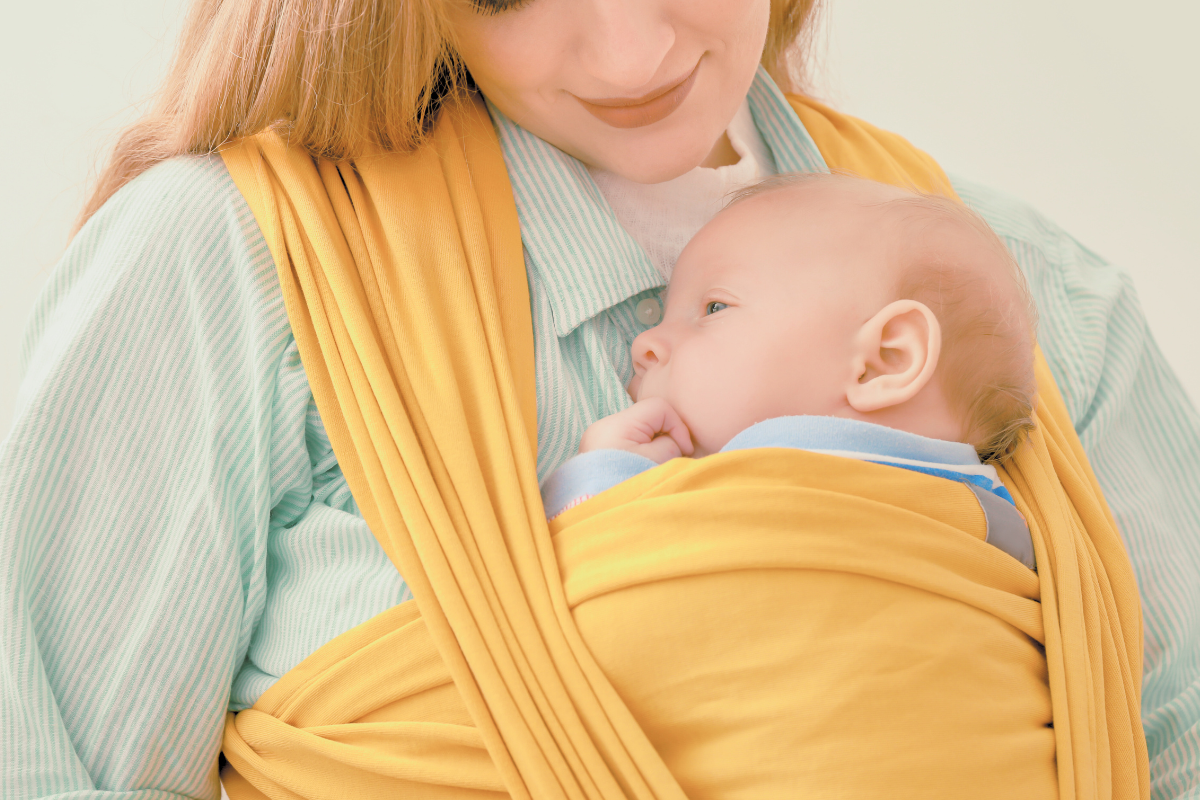
Yes, newborn wearing is safe—as long as it’s done correctly.
Like any baby gear, proper safety measures are key to keeping your little one secure and comfortable when using baby slings, baby wraps, or infant carriers. The main concern with baby-wearing is maintaining your baby’s airway and positioning their body in a way that supports healthy development.
Follow these simple steps, stay aware of their natural position, and you’ll be all set for safe and cozy babywearing.
The T.I.C.K.S. Rule for Safe Babywearing

Here’s an easy way to ensure baby safety: the T.I.C.K.S. rule. Experts suggest this quick checklist to help you remember what to do when wearing your baby.
-
Tight. The carrier should fit snugly, holding your baby close so they don’t slip or slump.
-
In View at All Times. You should be able to see the face of the baby strapped on you just by looking down. No need to adjust fabric or move anything around just to see your baby's face.
-
Close Enough to Kiss. Can you give your baby a little kiss on the head without leaning in too far? Great! If you can easily kiss the baby inside the carrier or wrap, they're in the correct position.
-
Keep Chin Off Chest. Your baby’s chin should never be tucked against their chest, as this can restrict breathing. Check the finger width between their chin and chest.
-
Supported Back. Your baby’s back should be supported so they aren’t curled into a C-shape, which presents greater risk and makes breathing harder.
Common Safety Concerns and How to Address Them
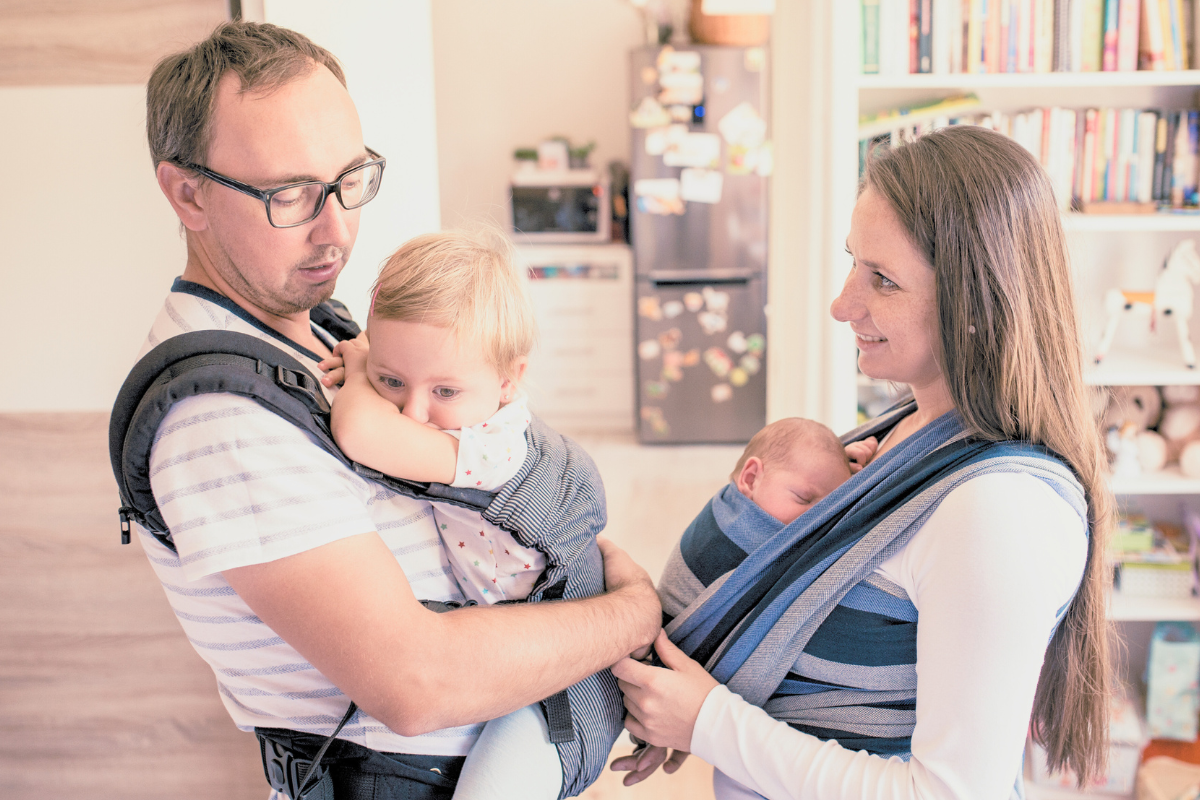
There are a few common risks when it comes to newborn wearing, but they can be easily managed.
-
Suffocation Risks. Young babies have weak neck muscles, so their heads might fall forward, blocking their airway. Always follow the T.I.C.K.S. guidelines to keep your baby in a safe position.
-
Overheating. Babies can heat up quickly when worn against your body, especially if you’re out and about. Stick to light clothing and check them often—if their head feels too warm, move to the shade or remove a layer.
-
Improper Positioning. If your baby isn’t in the right position, it could put stress on their hips and even cause dysplasia. Use a carrier that keeps their legs spread, with the baby's knees slightly higher than the baby's hips—what’s called the “M” position. It’s comfy and better for their development.
With just a few adjustments here and there, you’ll keep your baby safe and cozy while getting all the benefits of newborn wearing. Plus, it’s a great way to keep them close without giving up your ability to multitask!
Different Types of Carriers for Newborn Wearing
When it comes to baby wearing, you’ve got plenty of carrier options. Each one has its strengths, especially when it comes to wearing your newborn. Let’s break down the different types so you can decide which one fits your needs and lifestyle best.
1. Soft Wraps
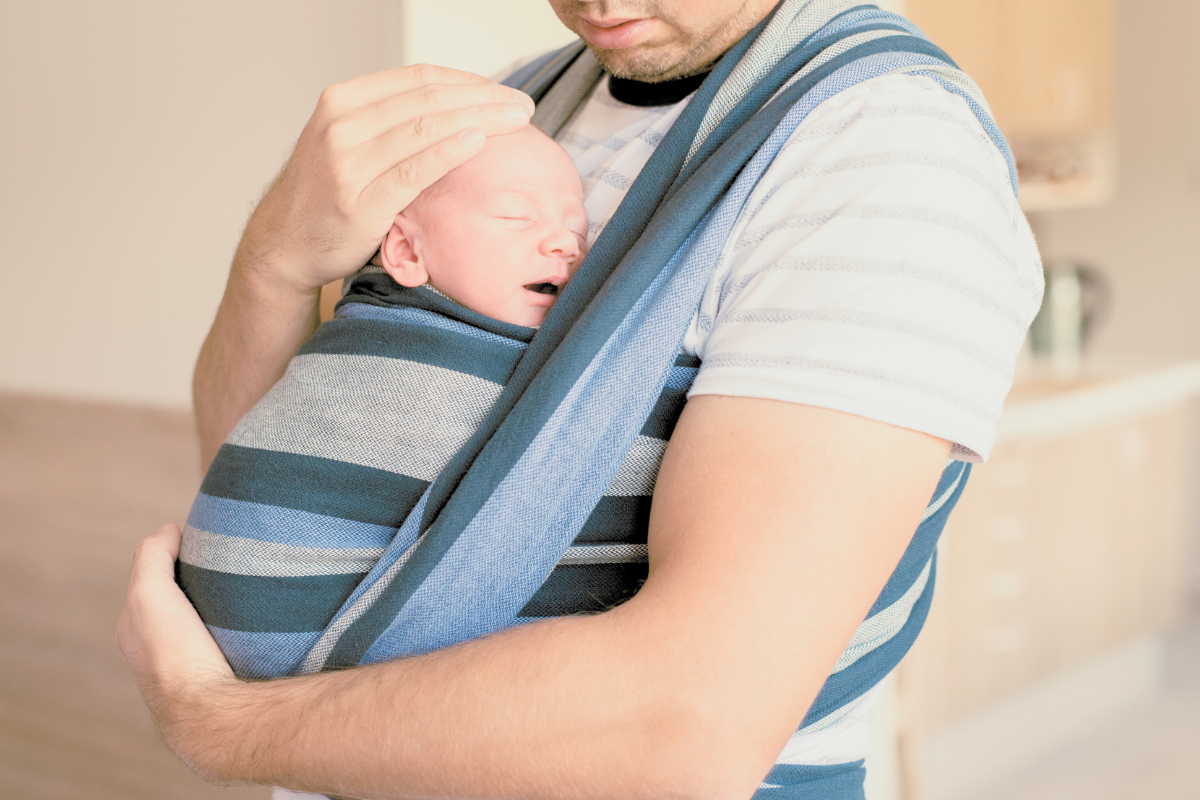
Soft wraps have been around for centuries, used in cultures like Africa and Latin America. These long, stretchy pieces of fabric wrap around your body, creating a snug and secure spot for your baby. They’re ideal for newborns because they mimic the coziness of the womb—keeping your little one feeling safe and secure.
Why it’s great for newborns: Soft wraps hug your baby close, providing that warm, womb-like environment newborns crave. The stretchy fabric molds to their body, making it feel extra cozy.
Tips for comfort: Look for soft, breathable fabrics that won’t cause overheating. Cotton blends with a bit of stretch are usually the most comfortable and adjustable.
Cons: Wrapping can be tricky at first, and if you’re in a hurry, figuring it out might feel like a game of origami. Also, they don’t offer enough support for older, heavier babies.
2. Ring Slings
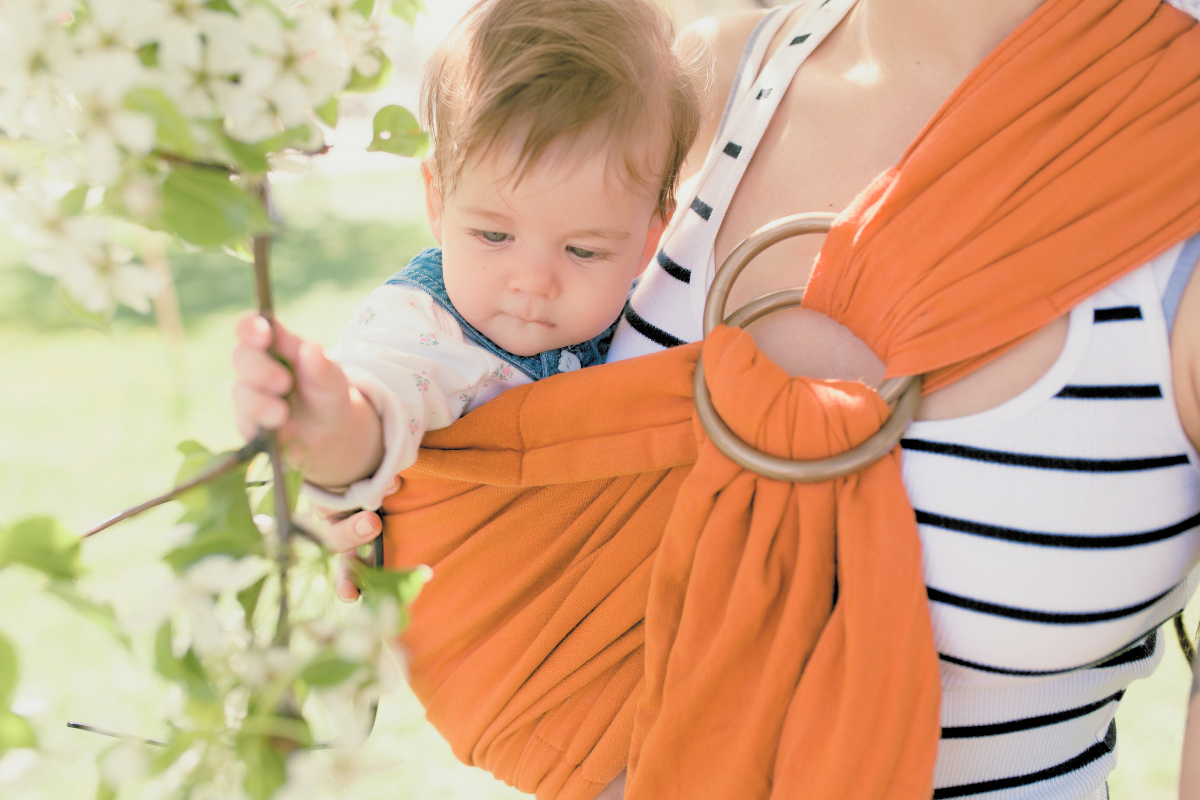
Ring slings have a rich history too, with origins in Southeast Asia. These carriers are made from a long piece of fabric threaded through two rings, creating a pouch to carry your baby on one shoulder. They’re simple but effective, making them a favorite for quick trips or around-the-house babywearing.
Pros: A baby sling is easy to wear and adjust, perfect for when you need to get your baby in and out quickly. The rings allow for quick resizing, so you can switch from parent to parent with ease. Plus, they’re super portable—just throw one in your diaper bag!
Cons: Carrying your baby on one shoulder for long periods can get uncomfortable, especially as they grow heavier. Some parents also find adjusting the rings a bit fiddly at first.
3. Structured Carriers with Newborn Inserts
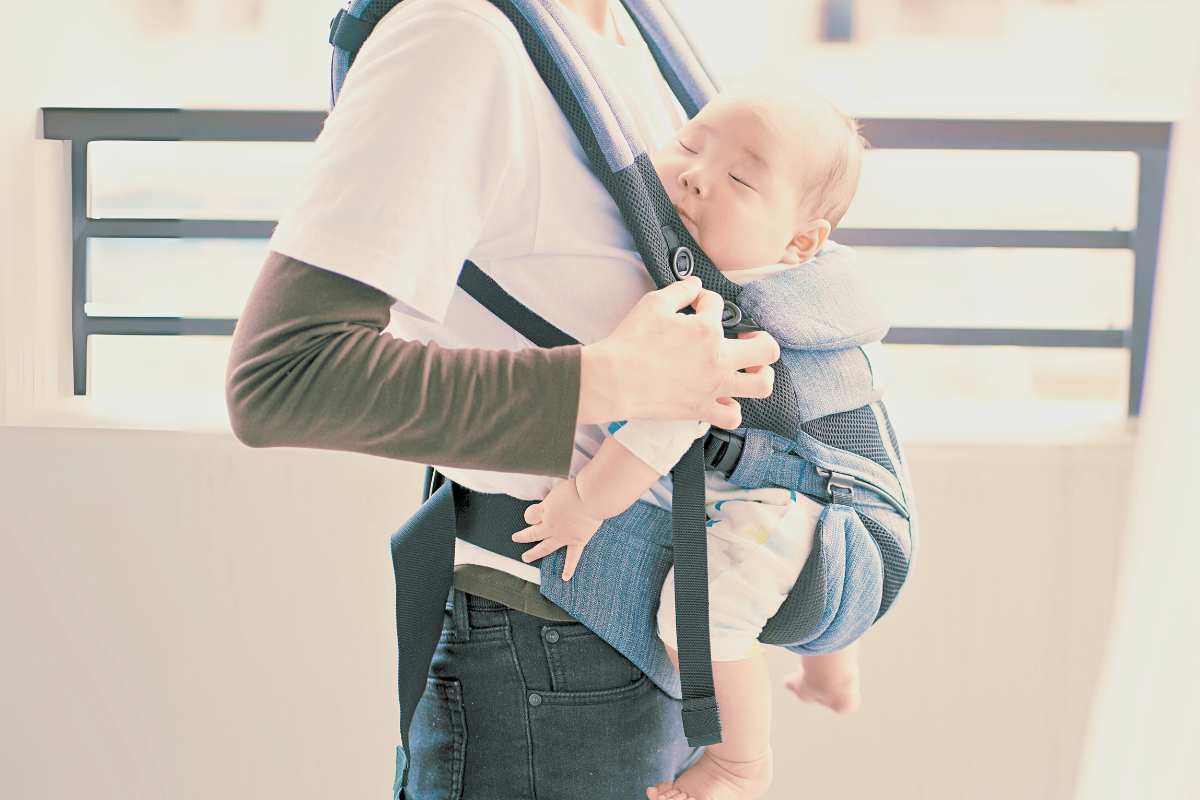
Structured carriers, often referred to as buckle carriers, offer a more modern take on babywearing. Think of them like a baby backpack—only way more stylish and comfortable. They come with padded shoulder straps and waistbands, plus inserts to make them safe for newborns.
This type of carrier is designed to distribute the baby’s weight evenly, making it a solid option for parents who plan to baby wear for the long haul.
Pros: They offer great back support for parents and can carry babies well into toddlerhood, so you get a lot of mileage out of one purchase. Adjustable straps mean you can tweak the fit as your baby grows. Opt for a soft structured carrier for maximum comfort.
Cons: Without the newborn insert, these carriers can feel bulky for carrying babies who are smaller than average. This makes them only suitable for older babies or larger babies. They’re also pricier than a wrap carrier or sling, so they might not be your first choice if you’re just getting started with baby-wearing.
4. Meh Dais

(Mei Tai Carrier from Love & Carry)
Meh Dais (also called Mei Tai) come from China and have been a go-to for parents for generations. These carriers have a simple design: a panel of fabric for the baby’s body and long straps that tie around your waist and shoulders. They combine the softness of a wrap with the support of a structured carrier.
Why it’s great for newborns: The adjustable nature of Meh Dais makes them perfect for newborns and toddlers alike. You can wear your baby on the front, back, or hip, and the straps make it easy to get a comfortable fit.
Cons: Tying the Meh Dai takes a bit of practice, and some parents find it less convenient compared to buckle carriers. But once you get the hang of it, it’s a versatile option for babywearing.
By knowing your options, you can pick a carrier that fits your needs, whether you’re planning to wear your newborn for short bursts or all day. Each type offers something unique, and the right one depends on what works best for both you and your baby!
How to Choose the Right Carrier for Your Newborn
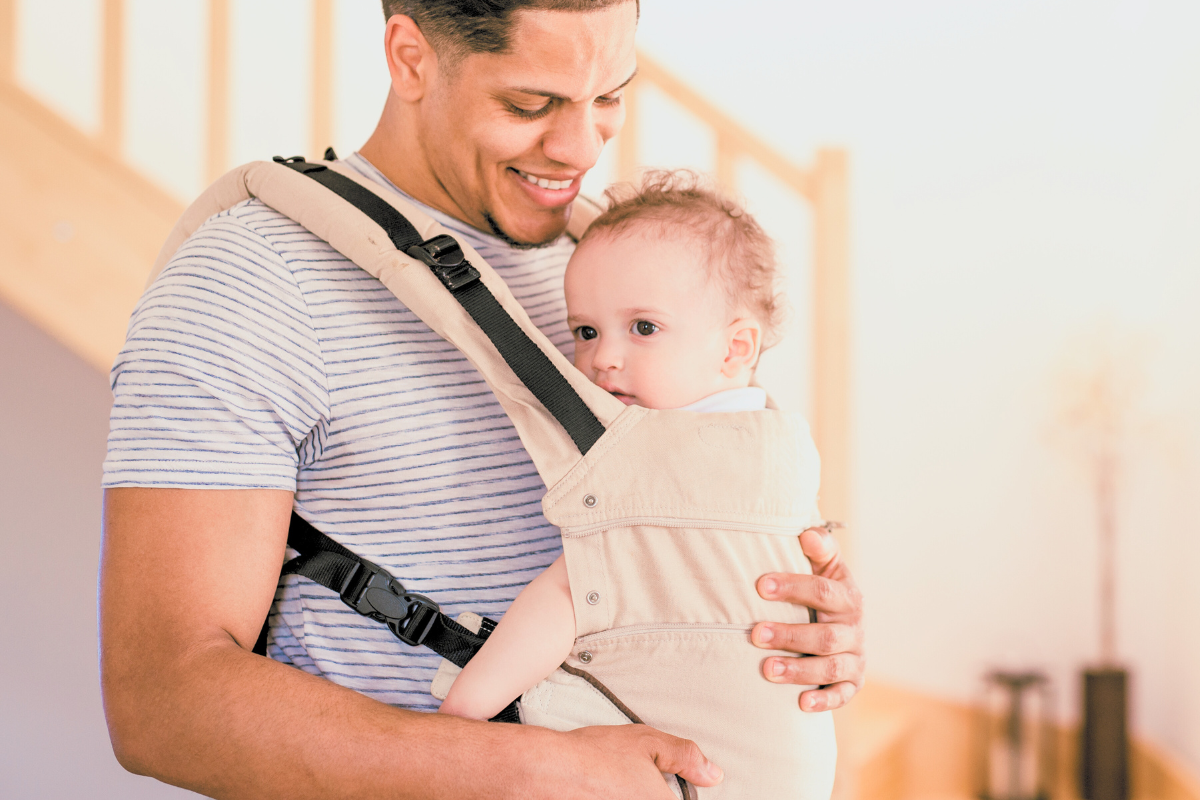
Choosing the perfect carrier isn’t just about what looks cute—it’s about finding something that works for you and your baby. Here are a few things to keep in mind to make the best pick:
-
Baby’s size. Every baby is different, and so is every carrier. Newborns are tiny and need a snug, supportive carrier that keeps them safe and cozy. Make sure the one you choose offers enough support for their little body.
-
Your comfort. Let’s be honest: you’re the one carrying your baby, so you need to be comfortable too! Look for soft structured carriers with wide, padded straps that help distribute your baby’s weight evenly across your shoulders and back. Trust me, your body will thank you.
-
Ease of use. Some carriers can feel like a puzzle the first time you try to use them. If you want something quick and simple, go for a design that’s easy to put on and take off, especially when you’re in a rush (which you will be, a lot).
-
Try before you buy. Every parent and baby combo is different, so it’s a good idea to try out a few carriers before making your choice. See how they fit, feel, and work for you. If possible, borrow one or test it out in-store.
-
Healthy hip positioning. One thing to watch for is proper hip support for your baby. The carrier should hold your little one’s legs in the "M" position, with their knees higher than their bottom. This helps keep their hips in a healthy position and reduces the risk of developmental hip dysplasia.
Common Mistakes to Avoid in Newborn Wearing

Even though baby-wearing seems simple, there are a few common mistakes that can happen along the way. Don’t worry—these are easy to avoid once you know what to look out for. Let’s go over how to keep things safe and comfy for you and your little one.
-
Over-tightening or under-tightening the carrier. Finding that sweet spot is key. Baby carriers that are too loose means your baby could slip into an unsafe position, while a too-tight fit makes things uncomfortable for both of you. You want your baby carrier snug enough to hold them securely, but not so tight that it feels restrictive.
-
Allowing your baby’s head to drop or slouch. Newborn babies have weak neck muscles, so their head needs support. Always make sure young infants are properly positioned and not slumping their head forward or to the side. Think of it as giving them the perfect little seat with head support included.
-
Wearing your newborn in unsafe environments. Baby-wearing is a lifesaver for multitasking, but it’s not a good idea in every situation. Cooking on a hot stove or handling hot liquids while wearing your baby can be risky, so save those tasks for when they’re safely settled elsewhere.
-
Using incorrect positions for newborns (inward-facing vs. outward-facing). For newborns, inward-facing is the way to go. It’s safer and more comfortable for them until they gain better head control, usually around 4 to 6 months. Outward-facing may be tempting when they start showing interest in the world, but hold off until they’re ready.
-
Wearing your newborn incorrectly. Baby-wearing works great both indoors and out, but be mindful to prevent accidental falls. Make sure you position your baby properly and always stay aware of their breathing patterns. Outdoors, dress them appropriately for the weather and watch for signs of overheating or getting too cold.
By avoiding these mistakes, you’ll make newborn wearing a safe, comfortable, and enjoyable experience for both you and your little one. And, let’s be honest, it’s also a great way to free up your hands for that much-needed coffee!
Final Thoughts
Newborn wearing is more than just a hands-free way to carry your little one—it’s a beautiful way to bond, soothe, and support your baby’s growth. With the right carrier and proper safety in mind, you can enjoy all the benefits of keeping your baby close while still getting things done.
From calming those fussy moments to making breastfeeding more convenient, baby-wearing can be a game-changer in those early months. Just remember to avoid common mistakes, stay mindful of your baby’s positioning, and pick a carrier that works best for both of you. Enjoy the snuggles—they don’t stay this tiny for long!




